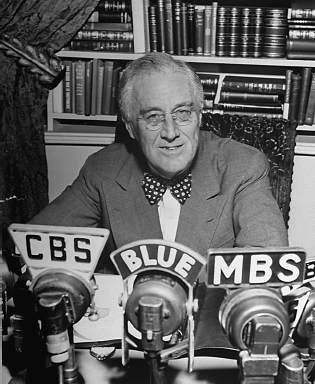Informative Speeches
Informative Speeches
Page 235

In our information society, managing and communicating information are keys to success (Berrisford, 2006). Informative speeches aim to increase your audience’s understanding or knowledge by presenting new, relevant, and useful information. Such speeches can take a variety of forms. They might explain a process or plan, describe particular objects or places, or characterize a particular state of affairs. You can expect to give informative speeches in a variety of professional situations, such as when presenting reports to supervisors or stakeholders, when running training sessions for a company, and when formally educating.
Consider the storied Fireside Chats that President Franklin D. Roosevelt delivered during the 1930s and 1940s. Through the then-emerging medium of radio, Roosevelt was able to reach, inform, and reassure a vast number of Americans suffering through the Great Depression and, later, the Second World War. A brief excerpt from his first such address, delivered shortly after he took office and in the immediate aftermath of widespread bank failures, is offered as Sample Speech 11.1. Note how Roosevelt describes what happened with the banks in clear and simple language.